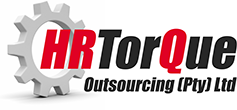Author: Delene Sheasby (www.worksafetysa.co.za)
Editors note: Delene is a registered health and safety management consultant. The below points are just starting points and depends on the type of business and risks you face – you may need to include other elements too. Should you need assistance with your workplace safety compliance contact us today.
- Conducting hazard identification and risk assessments: Identifying potential hazards through systematic risk assessments is a critical step. Regular evaluations help businesses understand the risks inherent in their operations and take appropriate measures to mitigate them.
- Appointing health and safety representatives and committees: At the forefront of OHS compliance is the appointment of trained health and safety representatives and the formation of committees. These individuals act as the cornerstone of a proactive safety culture, bridging the gap between management and the workforce in identifying and mitigating workplace hazards.
- Developing health and safety policies and procedures: Customised policies and procedures are the playbook for safety in the workplace. They should reflect the unique aspects of the business while aligning with national OHS standards, ensuring a clear and practical approach to workplace safety.
- Providing health and safety training and awareness: Knowledge is power when it comes to OHS. Regular training sessions and awareness programmes empower employees with the knowledge to identify risks, follow safety protocols, and respond effectively in emergency situations.
- Ensuring proper use and maintenance of personal protective equipment (PPE): PPE is often the last line of defence against workplace hazards. Ensuring its proper use, regular maintenance and accessibility is paramount for protecting employees from potential harm.
- Emergency planning and preparedness: A well-conceived emergency plan can mean the difference between chaos and structured response in critical situations. Regular drills and training ensure that employees know how to act swiftly and efficiently in an emergency.
- Health and safety information, reporting and record-keeping: Documenting and reporting are crucial for tracking OHS performance and compliance. Maintaining accurate records of incidents, training and risk assessments provides invaluable insights for continuous improvement in safety standards.
- Regular health and safety inspections and audits: Inspections and audits are essential tools for identifying non-compliance and areas for improvement. These regular checks help ensure ongoing adherence to safety standards and regulations.
- Ensuring worker wellness and occupational health: Beyond immediate safety measures, long-term employee wellness is a key aspect of OHS. Programmes focusing on occupational health, including disease prevention and stress management, contribute to a healthier, more productive workforce.
- Compliance with industry-specific regulations: Businesses must be mindful of additional regulations specific to their industry. Whether it is construction, chemicals or electrical safety, understanding and complying with these specific standards is crucial for comprehensive OHS management.

